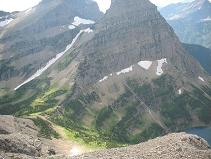
as seen from the "gray band"
of our west-facing traverse.
Stoney Indian Lake
is at lower right. (D)
Dates: August 16-18, 2010
Author: Adam Helman

|
|
Stoney Indian Pass is at left as seen from the "gray band" of our west-facing traverse. Stoney Indian Lake is at lower right. (D) |
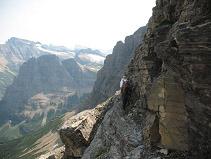
|
|
At-times the east traverse is narrow with sharp drops. Mouse-click to see Andy and Adam. (D) |
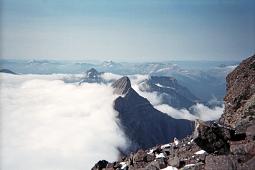
|
|
Morning clouds are blocked by Stoney Indian Peak as seen from roughly 9,500 feet on Mount Cleveland's south ridge. (A) |
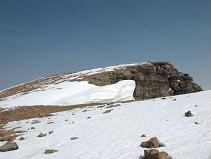
|
|
A cornice from last winter contrasts with a recent storm's snow. Summit is just beyond the horizon. (D) Mouse-clicking the image shows Adam near or at the summit. |
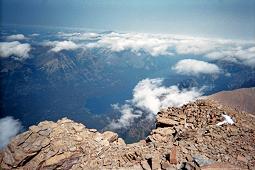
|
|
Upper Waterton Lake, our departure point, fully 6,250 feet below us while atop Mount Cleveland. (A) |
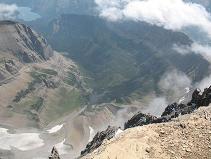
|
|
A jaw-dropping view down into one valley. (D) |
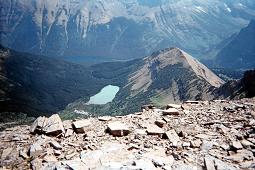
|
|
This lake is a stunning aquamarine from dissolved, glacier-borne sediment. (A) |
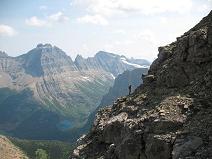
|
|
Adam set against the magnificent scale of our surroundings. (D) |
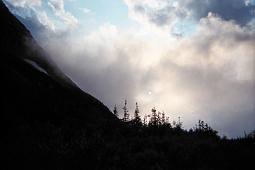
|
|
The sun hides in late afternoon at camp. (A) |
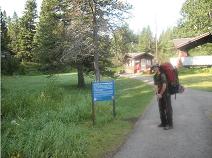
|
|
"Welcome to the United States" along the paved path between boat landing and Goat Haunt. (D) |
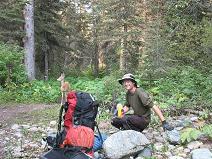
|
|
Adam and a local at the Kootenai Campground trail junction. (D) |
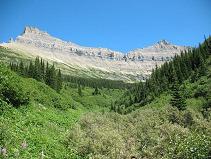
|
|
After turning east on the approach hike one enjoys this view up the drainage leading to Stoney Indian Lake. (D) |
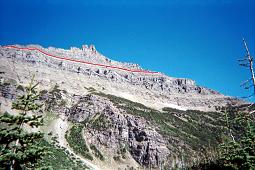
|
|
The "gray band" is followed to traverse from above Stoney Indian Pass to a notch. (A) |
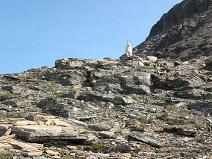
|
|
A mountain goat above 9,000 feet suggests bears will not perturb our summit bid. (D) |
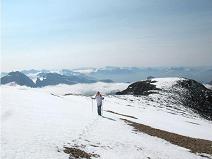
|
|
Andy pushes ahead on the final, snowy slope. (D) |
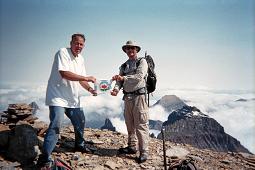
|
|
Success! Andy (viewer's left) and Dennis display the State Highpointers logo. (A) |
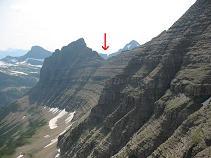
|
|
The east-facing traverse on descent requires return to the indicated ridgeline notch. (D) |
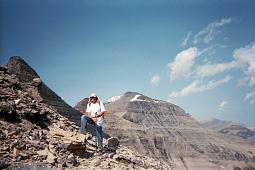
|
|
Andy completes our east traverse after returning from the summit. (A) |
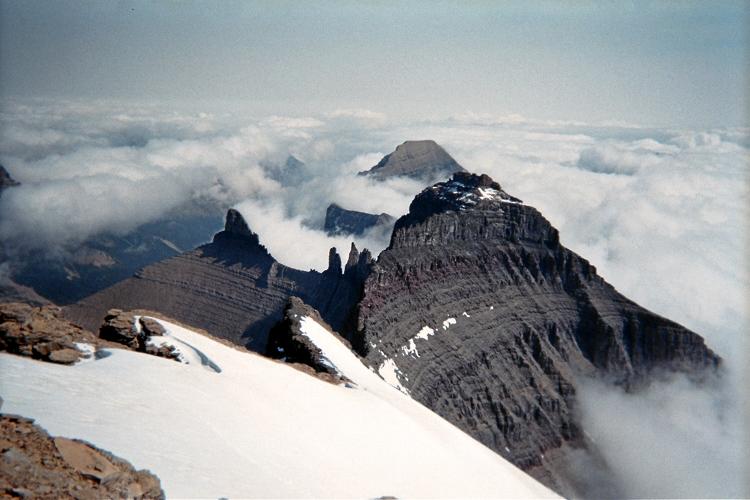
|
|
View northeast from Mount Cleveland's summit. Awesome, glacially-scoured topography, such as shown, spurred the formation of Glacier National Park. (A) |